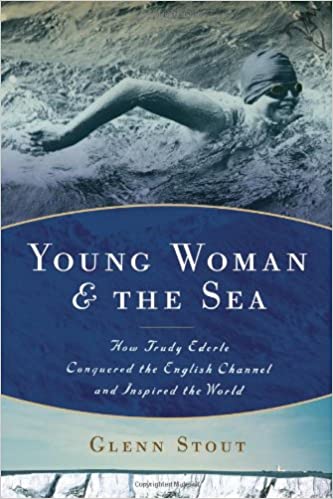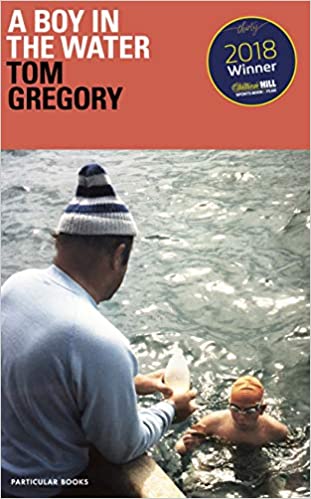Well, my swimming is currently nothing to write home about… but on purpose and by plan. I’m getting in some recovery, working on my stroke and using my time to plan in other ways (A possible DIY swim camp at the end of March, for example).
While doing nothing but slow 25s is demoralizing in a way (and not being sure what my shoulder is up for sucks), I feel like I’m working on the right things at the right time. In particular, I’m focusing on engaging my core in freestyle in a way that I never have before.
I also just finished two Channel books and I figured that since I haven’t been posting, a book review might be in order.
I’ve read a lot of Channel literature by this point, and every book is interesting to me in some way. The absolute myriad of ways that people train for and execute a Channel crossing is fascinating. These two books were notable for being the first two to really, really, really emphasize the difficulty of the undertaking. They did it for mostly dramatic reasons, but it was a bit hard not to come away feeling intimidated. But I rarely stay intimidated for long, and the stories were fantastic. And how I love stories of people who, like myself, want to throw themselves up against this wall and see if they can scale it – knowing how very, very difficult it is.
Young Woman & the Sea (Glenn Stout)

A bit flowery and sensational in the telling, but overall, a really good reading experience. It was quite intimidating, as Stout really captures the insane difficulty of swimming the Channel. I had to keep reminding myself that the early swimmers were doing breaststroke in wool swimsuits. (Which backfired a bit as it turns out that most of the men and some of the women would ditch their suits once they were out to sea. And on her successful crossing, Trudy Ederle actually invented a two-piece and sewed it out of silk. She also had goggles made from road goggles – sealed internally with candle wax and sealed to her face with lanolin (I think it was lanolin). The author lamented on her behalf that she never capitalized on the bikini idea, and I had to grin a bit that being the first woman to swim the English Channel was not enough.
I am pretty steeped in Channel lore at this point, but I had never heard that it was possible that Ederle had been poisoned by her Channel coach on her first attempt. This story alone was really interesting (although all but unverifiable at this point). The coach was a Scot who had attempted the Channel himself more than 20 times and had never made it. He had financial incentives to prevent her from succeeding, and he was the only person in charge of her food. She became disoriented in a very weird way in the water and proceeded to sleep for 18 hours after being pulled out (the coach was also the one who ordered her pulled out). There are alternative explanations for this, but the effects were completely different from any of her other experiences in the water. The politics of women’s swimming dictated that she not make these charges public, so we’ll never know for sure.
Although the prose was a bit purple for my taste, I enjoyed the far-ranging background in this book more than I expected to. Understanding the history of women’s swimming (and especially the importance of events like a boat fire that needlessly killed hundreds of women simply because they couldn’t swim 10 yards) and the history of how the Channel was formed are not at all necessary but they did indeed complement the story of this woman’s amazing achievement.
I’m left with a sad taste in my mouth due to the focus at the end of the book on how she failed to garner the financial windfall that you could consider her due (and I’m even more bothered by the reports of her being driven to nervous breakdown by the fame she received… without the protection that should have gone with it). I remind myself that that all makes a good story… but Trudy Ederle loved the ocean above all else. I hope that on the inside she was happy about her accomplishment.
There will be no ticker-tape parade for me if I manage the feat, and I will spend money rather than earn it, but to quote Trudy Ederle when told to get out of the water because others thought that the sea was too rough for her – “What for?” Perhaps my version is, when asked why I plan to swim the Channel – “Why not?”
A Boy in the Water (Tom Gregory)

I went straight from the tale of the first woman to swim the Channel to the story of the youngest person to swim the Channel – an autobiography by Tom Gregory, who swam the Channel in 1988 at the age of 11 (which, coincidentally, was my age in 1988). He will likely hold that title in perpetuity, as the two regulating bodies have since instituted age limits.
Some books are so good that they make me think that I could never write a book. Some books have the opposite effect. This was one of the latter, but I do not mean that as an insult. It smacked of a first-time author, but in a way that was simplistic instead of impenetrable. The style almost worked for me because it seemed like that of an 11-year-old boy… but one who writes exceptionally well. I don’t know how many notes Tom Gregory took at the time, but his memories seem remarkably clear. I’m sure that, as for all of us, time has colored some of them, but it almost seems irrelevant when someone is giving you such a good feel for what it was like to be there, doing this impossible thing.
The book is set up flashing back and forth between the swim in 1988 and the training Tom did in the 4 years leading up to it. Both are very interesting, and he does a really good job bringing his supporters to life on the page. It is probably helped by the ease with which those of us who were at swim camps and on swim busses in the 80s and 90s can image his parallel experiences.
The only real complaint I have is that Gregory never follows up on what happened with his friend Roger. I’m joking here but, authors, come on, don’t leave us hanging on important plot points!
All in all, a good read (with a very heavy British vernacular, BTW) and just an unbelievable accomplishment.
